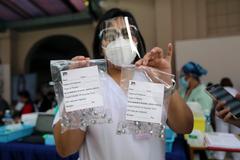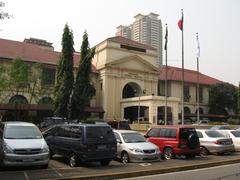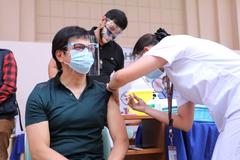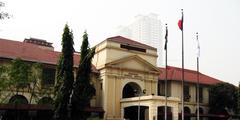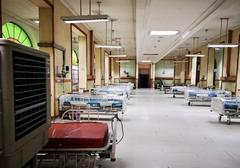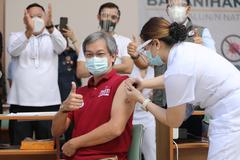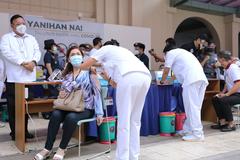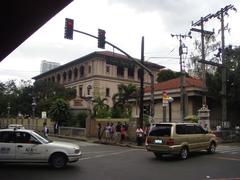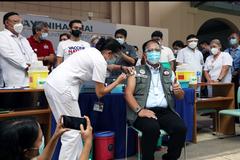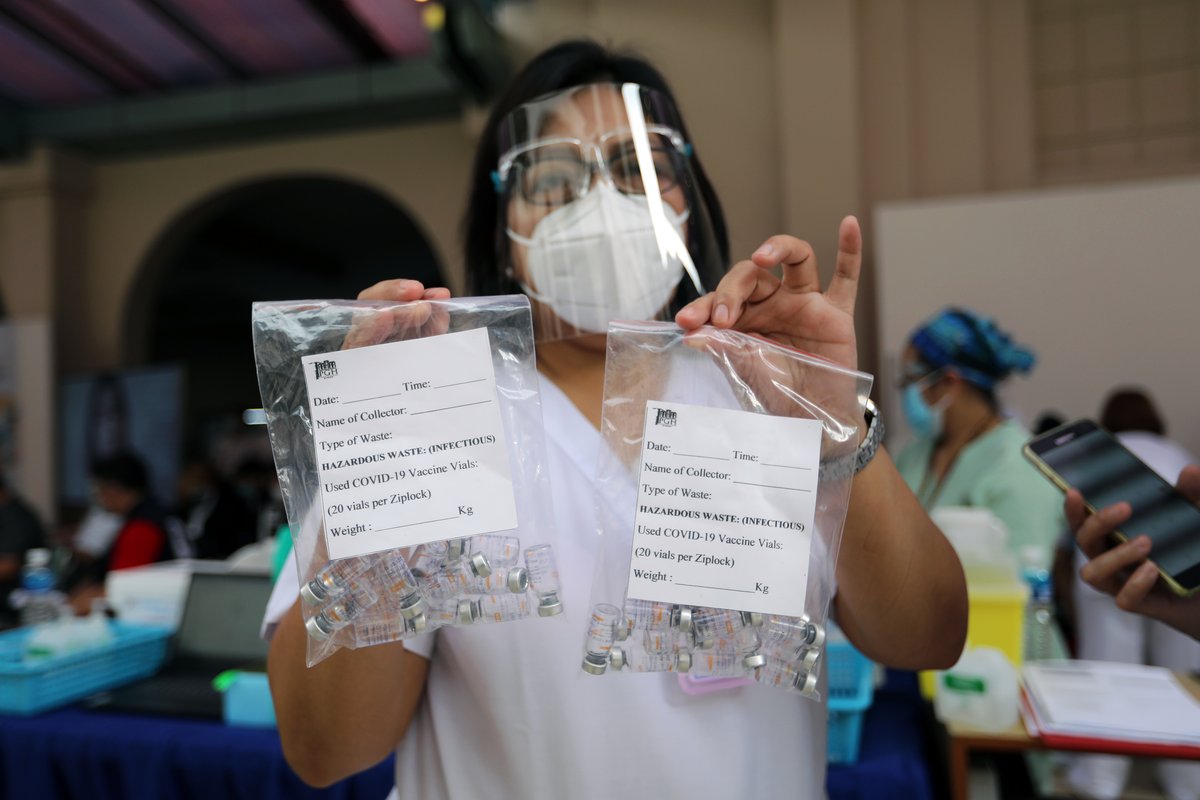
Philippine General Hospital Visiting Hours, Tickets, and Guide to Metro Manila Historical Sites
Date: 15/06/2025
Introduction
The Philippine General Hospital (PGH), located in Ermita, Manila, is a landmark institution that embodies the nation’s historical, architectural, and healthcare heritage. Established in 1910 during the American colonial period, PGH is not only the country’s largest public hospital but also the primary teaching hospital for the University of the Philippines College of Medicine. Its neoclassical design by William E. Parsons stands as a testament to the ideals of progress, resilience, and compassion. Beyond its medical significance, PGH is a living monument to pivotal moments in Philippine history and a gateway to exploring Manila’s rich cultural landscape (Philippine General Hospital Official Website, Traveloka PGH Location and Access, Springer Link).
This guide provides comprehensive information about PGH’s history, visitor guidelines, and its proximity to other key historical sites in Manila, ensuring a meaningful and respectful experience for travelers.
Table of Contents
- Introduction
- Foundations and Early History
- American Colonial Influence and Architectural Philosophy
- Architectural Features and Layout
- Cultural and Social Significance
- Preservation and Modernization Efforts
- Visitor Information: Visiting Hours, Accessibility, and Guidelines
- Getting There and Nearby Attractions
- Travel Tips for Visitors
- Frequently Asked Questions (FAQ)
- Intramuros: The Historic Walled City
- Rizal Park: Manila’s Iconic Green Space
- Conclusion
- References
Foundations and Early History
PGH was conceived as part of the American colonial government’s push to modernize Philippine healthcare, officially opening its doors in 1910 (archive.org). Closely linked to the establishment of the University of the Philippines College of Medicine, the hospital served as a central hub for training Filipino medical professionals in Western medicine, marking a significant shift from previous Spanish and indigenous practices (Springer Link).
American Colonial Influence and Architectural Philosophy
Designed by William E. Parsons, PGH’s neoclassical architecture was inspired by the City Beautiful Movement, emphasizing grandeur, order, and public service (Design Goulash). Features such as wide corridors, high ceilings, and large windows prioritized ventilation and natural light, crucial for Manila’s tropical climate. The use of reinforced concrete signaled a departure from the wooden structures of the Spanish era, ensuring durability and fire resistance.
Architectural Features and Layout
PGH’s main building is a prime example of neoclassical architecture, with a symmetrical façade, imposing columns, and a U-shaped layout enclosing a landscaped courtyard. The grand entrance, marked by a classical portico, leads to a welcoming lobby that integrates local materials like capiz shell windows and indigenous hardwoods. Originally designed for 350 beds, PGH has expanded significantly, but the original structure remains the symbolic heart of the hospital (Design Goulash).
Cultural and Social Significance
PGH has played a vital role in Philippine society, serving as a site of medical advancements and a witness to major historical events, such as its use as a military hospital during World War II. Its commitment to caring for the underserved has made it a symbol of social justice and bayanihan (community spirit). Generations of Filipinos have passed through its halls as patients, students, and healthcare workers, contributing to its legacy (Springer Link).
Preservation and Modernization Efforts
Efforts to preserve PGH’s historical and architectural integrity continue alongside modernization. Restoration focuses on maintaining the neoclassical façade and key interiors while upgrading facilities for safety and efficiency. New constructions are designed to echo the original architectural motifs, balancing heritage with functionality. PGH’s status as a National Historical Landmark underscores its cultural importance.
Visitor Information: Visiting Hours, Accessibility, and Guidelines
- Visiting Hours: General access to hospital grounds is from 6:00 AM to 8:00 PM daily. Patient visits are usually allowed from 2:00 PM to 4:00 PM, but these may vary, especially during public health emergencies. Always check with PGH administration before visiting.
- Entry and Tickets: No entrance fee is required. As a public hospital, access to patient areas is restricted.
- Accessibility: PGH is equipped with ramps and elevators. Visitors with special needs should contact the hospital in advance for assistance.
- Photography: Exterior photography is generally permitted. Photography inside clinical areas or of patients and staff is prohibited without explicit permission.
- Guided Tours: Occasional guided tours are organized through the University of the Philippines or heritage groups. Contact the PGH Public Affairs Office or UP Manila for arrangements.
(Philippine General Hospital Official Website, Traveloka PGH Location and Access)
Getting There and Nearby Attractions
PGH is situated on Taft Avenue in Ermita, Manila, making it easily accessible by public transport:
- LRT-1: Pedro Gil Station (closest stop)
- Jeepneys and Buses: Multiple routes along Taft Avenue
Nearby sites include the University of the Philippines Manila, Rizal Park, the National Museum complex, and Intramuros, all within a short distance (Traveloka).
Travel Tips for Visitors
- Expect hot and humid weather, with June temperatures averaging 32°C (90°F) (Asia Highlights).
- Dress in light, breathable clothing.
- Bring water, sun protection, and an umbrella (for sudden rain showers).
- Plan ahead by checking for any hospital advisories or public health restrictions.
Frequently Asked Questions (FAQ)
Q: What are the visiting hours at PGH?
A: Grounds are accessible from 6:00 AM to 8:00 PM; patient visiting hours are generally 2:00 PM to 4:00 PM.
Q: Are guided tours available?
A: Occasional guided tours may be arranged through official contacts.
Q: Is photography allowed?
A: Photography is allowed outside; inside clinical areas requires prior permission.
Q: How do I get to PGH by public transport?
A: Take the LRT-1 to Pedro Gil Station or use jeepneys/buses along Taft Avenue.
Q: Is PGH accessible for persons with disabilities?
A: Yes, with ramps and elevators. Contact ahead for assistance.
Intramuros: The Historic Walled City
Intramuros, the famed “Walled City,” is a celebrated historical site just a short distance from PGH. Established in 1571, it was the seat of Spanish colonial power for over 300 years. Its massive stone walls, cobblestone streets, and iconic landmarks such as Fort Santiago and San Agustin Church (a UNESCO World Heritage Site) offer a journey through Philippine colonial history.
- Visiting Hours: 8:00 AM – 7:00 PM; individual sites may vary.
- Tickets: Free for the Intramuros grounds; entrance fees for Fort Santiago and San Agustin Church Museum.
- Must-See Sites: Fort Santiago, San Agustin Church, Casa Manila, Manila Cathedral
- Guided Tours: Walking tours and kalesa (horse-drawn carriage) rides are available.
- Accessibility: Most areas are wheelchair accessible, but cobblestones may be uneven.
- Nearby Attractions: Rizal Park, National Museum Complex
(Intramuros Administration website, UNESCO World Heritage Sites in the Philippines)
Rizal Park: Manila’s Iconic Green Space
Rizal Park (Luneta) is another essential stop, located near both PGH and Intramuros. This historic park commemorates Dr. José Rizal, the national hero, whose monument serves as its centerpiece.
- Visiting Hours: 5:00 AM – 9:00 PM daily
- Ticketing: Free entrance
- Guided Tours: Available via the National Parks Development Committee
- Accessibility: Wheelchair-accessible with restrooms for persons with disabilities
- Features: Dancing fountain, Japanese and Chinese Gardens, regular cultural performances
- Nearby: Intramuros, National Museum Complex, Manila Ocean Park
Summary and Key Travel Tips
The Philippine General Hospital is more than a hub for health services; it is a living testament to Manila’s history, architectural grandeur, and enduring ethos of public service. Its proximity to landmarks like Rizal Park and Intramuros makes it an ideal starting point for cultural explorations in Manila.
Key Tips:
- Respect hospital operations and privacy policies.
- Dress appropriately for the weather.
- Use public transport for convenience.
- Plan visits around hospital advisories and public events.
For an enriched experience, utilize official guides, mobile apps like Audiala, and follow heritage organizations for event updates.
References
- Philippine General Hospital Official Website
- University of the Philippines Manila
- Traveloka: PGH Location and Access
- Springer Link
- Design Goulash
- Asia Highlights
- Intramuros Administration website
- UNESCO World Heritage Sites in the Philippines
- Official Rizal Park Website
Discover the intersection of healthcare, history, and culture at the Philippine General Hospital and nearby Manila heritage sites. Plan your journey, respect each landmark’s legacy, and immerse yourself in the stories that have shaped the heart of the Philippines.
